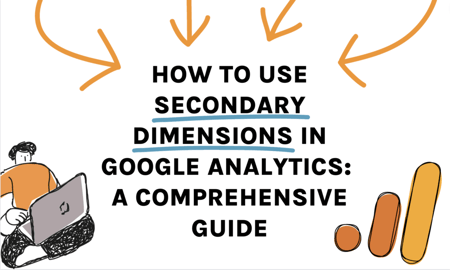SEO Proficiency: Deep Study Secondary Dimensions for Exact Metrics
SEO Proficiency: Deep Study Secondary Dimensions for Exact Metrics
Blog Article
Transform Your Information Understanding With Additional Dimensions
Exploring data via the lens of secondary measurements opens a world of untapped understandings, using a much more nuanced point of view on the ins and outs of your dataset. By untangling the layers beneath the surface metrics, you can reveal patterns and partnerships that may have otherwise gone undetected, leading the way for educated decision-making and tactical optimizations. This strategic application of additional dimensions not just enhances your data understanding however also functions as a driver for unlocking the complete capacity of your analytics ventures.
Advantages of Additional Measurements

By layering added measurements onto existing data, organizations can assess the influence of various aspects on essential metrics, helping them make more enlightened choices. Generally, the usage of second measurements leads to a lot more informative and durable data analysis, empowering businesses to drive critical activities based on a deeper understanding of their information.

How to Carry Out Second Dimensions
To efficiently carry out second measurements in data evaluation, companies must initially recognize key variables that line up with their logical objectives and objectives. This involves establishing the specific metrics and measurements that are most pertinent to the insights they seek to gain from the data. Once these essential variables are determined, organizations can after that pick the appropriate secondary dimensions to enhance their evaluation additionally. It is important to consider how these additional dimensions will certainly give additional context and deepness to the main information being analyzed.

Analyzing Data With Secondary Measurements
Utilizing second dimensions in data analysis boosts the deepness and context of insights derived from main data. By including additional dimensions into your evaluation, you can get an extra comprehensive understanding of the relationships and patterns within your information. This procedure includes checking out the key information through various lenses or perspectives, which can expose surprise connections or trends that might not be instantly apparent when assessing the data utilizing only key dimensions.
Examining data with additional dimensions permits you to segment and team your information in different methods, giving an extra nuanced view of your dataset. secondary dimensions. This division can aid you identify particular elements that may be influencing the continue reading this end results you are studying. By piercing down right into the information making use of secondary dimensions, you can uncover beneficial understandings that can direct decision-making and technique growth
Ideal Practices for Additional Dimensions
When including additional measurements into information evaluation, accuracy in defining the measurements is crucial for extracting meaningful insights. It is important to choose secondary dimensions that match the key data efficiently.
An additional best technique is to avoid redundancy in measurements. Ensure that the additional measurements add brand-new point of views or details to the analysis, instead than replicating information already existing in the primary dimensions. This will certainly aid avoid complication and enhance the interpretation of the data.
Moreover, it is very important to think about the scalability of the analysis when choosing second measurements. Select dimensions that can be easily broadened or changed as needed to fit future data needs or changes in analytical emphasis. By following these finest methods, experts can take official statement full advantage of the worth of second dimensions in information analysis and gain deeper insights right into their datasets.
Maximizing Insights Through Additional Dimensions
Integrating second dimensions purposefully enhances data analysis by supplying a much deeper understanding of the partnerships within the dataset (secondary dimensions). By making the most of insights through secondary dimensions, experts can uncover important patterns, fads, and reliances that might not be instantly apparent when analyzing the information via main dimensions alone
One key benefit of utilizing additional measurements is the capability to section and filter information much more specifically. This segmentation allows for an extra granular analysis of specific parts within the dataset, making it possible for analysts to identify connections and causations that might have otherwise been overlooked.
Furthermore, second dimensions can aid in contextualizing primary information factors by adding layers of info that use an even more comprehensive sight of the data. This contextualization is important for making educated decisions based on an alternative understanding of the dataset.
Verdict
To conclude, including additional dimensions in data analysis procedures supplies a more nuanced and comprehensive understanding of information, causing boosted insights and tactical decision-making. By integrating extra variables that align with analytical goals, concealed fads and relationships can be disclosed, giving a more comprehensive and contextualized view of information. This technique optimizes the possibility for optimization and reveals brand-new opportunities within operations.
Generally, the application of second measurements leads to more insightful and robust data evaluation, encouraging organizations to drive critical actions based on a deeper understanding of their data.
Utilizing secondary measurements in information analysis improves the depth and context of insights derived from primary data.Assessing data with secondary measurements enables you to sector and group your information in numerous methods, offering a more nuanced web sight of your dataset.When integrating secondary measurements right into data evaluation, accuracy in defining the measurements is vital for removing purposeful insights. Make certain that the second measurements add brand-new point of views or details to the evaluation, rather than replicating info already existing in the main measurements.
Report this page